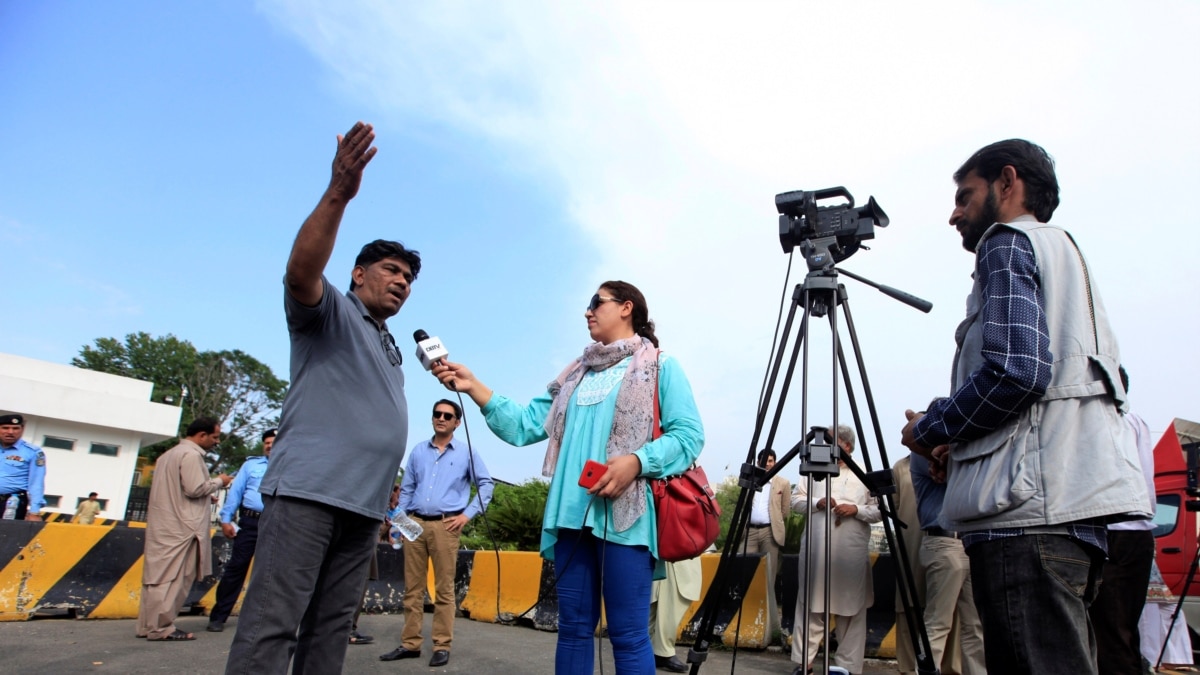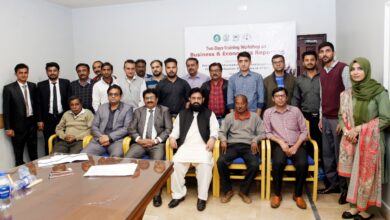Media: Missing Equal Representation Of Women.

Sahiwal: Are you going to university? Do you have access to internet? Can you attend any festival in your area or university? Can you write? Then you are a privilege woman in Pakistan. An era of Digital world when campaigns are on top trends about the rights of women and gender equality, south Punjab girls are still living in 18s.
Zakariya university, Islamia university and university of okara have mass media departments and running FM channels but how many females join media or peruse it as career is a big question. Another alarming situation to think about is the registration of female from rural areas in universities specifically in mass media?
Sujag, a prominent digital channel for south Punjab region started with aiming the equal representation of male and female. Sujag also offers internships to fresh graduates from universities but despite all the efforts they could not make it possible. Alveena Former editor sujag told newsin.asia.
Another biggest issue media women facing is field assignment. While working with sujag, I find it really difficult to connect with any investigative women journalist from any district of Punjab but always failed because women are not allowed to work in field from their families. Alveena further added.
Independent journalism faces oppression by the state and in the shrinking space of freedom of speech and expression, the space for women in the news media, too, is closing in. A lot of girls in Pakistan are students of journalism and mass communication, but they hesitate to join the field of media.
The fact that women are missing from top positions in Pakistan media has a very negative impact and keeps women out of media houses. The world of media is male-dominated and is literally being run by men in Pakistan, which has created an environment discouraging women from joining and staying in media houses.
The press in Urdu and regional languages, which captures 80 percent of the newspaper market, has very few women workers. The state-controlled Pakistan Television Corporation has had one female reaching a top position as a Managing Director and another female as Director of Programs. However, the official wire agency APP has never had a woman Director General nor has the state-owned Pakistan Broadcasting Corporation ever had a female heading the organization. A Global media Report stated.
“I have heard from my neighbors that you reach home at midnight and have a bad character, although they can see me in the company’s vehicle with its name written on it. But they have the habit of gossiping against me. I feel, for them there is no difference between a woman working in media and a prostitute.” A media women express her experience.
Social norms also restricted a woman to chose journalism as career because society thinks it is an in appropriate career for women. Another big obstacle is lack of capacity building. There is a need to provide women with equal opportunities for intensive and professional training, empowering them with skills to fight for their place in mainstream media. ng trainings for women. Rubia a freelance journalist from Bahawalpur express her experience.
While talking with different women from south Punjab, first they do not want to show their identity. Most of them have left media because of management issues. Women find it difficult to counter harassment at workplace. Even in 16 district of Punjab , you will hardly find 1 or 2 female representation in press clubs.
“Press clubs are more than a threatening and blackmailing places than the representation of journalists because of worst financial crises, a media women told.
Another biggest issue married women face is related to day care centers. A married women is not allowed to come with children and media houses even not provide day care facilities to them.
Sahiwal with 500 plus villages hardly have any prominent representation in mainstream media. In press club Sahiwal, only one female is a member who is also not working media person. Pakistan is an agricultural land but the agricultural areas are missing on mainstream media. Social media helps a bit in highlighting the issues of small districts of Punjab but all the Digital outlets are heading by men.
According to the Global Media Monitoring Project (GMMP) “Only 18 per cent of the women journalists were monitored as ‘Reporters’ (whose bylines were mentioned). While 82 percent were recorded as news presenters/ announcers. In comparison, 60 per cent of the men journalists were reporters and 37 percent were presenters.
“Only 10 percent of news stories on television were reported by women reporters whereas not a single news item was monitored to be reported by women reporters in print and radio. Surprisingly, Twitter had the highest number of reports by women reporters at 45 percent, followed by 25 per cent of stories from the internet.”
“To hold a mic, facing camera, interacting with number of people with confidence was my dream. I fought for that too but failed to convince my family to join media. sexual cases, female appearance, male dominance were the main hurdles in my career. A village girl can not dream big, we can not be like Asma Shirazi, Naseem Zahra, because we are not groomed, our accents are native dominant and we do not have family support but we can dream big” Nadia, belongs to a small village express.
Media can not report balance stories without the balance representation from the community. Society cannot grow faster without the helping hand of female. Journalism is not a crime , journalism is a source to raise voice and speak up louder to the world .Let the women step forward and live their dreams.





